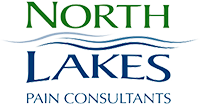Shingles Pain: Causes, Symptoms, and Treatments
Shingles Pain: Causes, Symptoms, and Treatments
Shingles Pain: Causes, Symptoms, and Treatments
Shingles (Herpes Zoster) is a viral infection. It causes a painful rash that is typically seen on your midsection. Shingles are caused by the same strand of virus that produces chickenpox. It is possible that the virus remains in your body if you’ve had chickenpox before. The virus can potentially reactivate from its dormant state and appear as shingles.
Early diagnosis and treatments are key to a short-lived infection. And while they are not life-threatening, the shingles virus is very painful and can cause complications.
What Causes Shingles?
Shingles is caused by the same virus that causes chickenpox. Only people who have had chickenpox can develop shingles. This specific strand of the herpes virus can lay inactive for years. But it can re-emerge and the virus, which was previously laying dormant in the nervous system, can travel along nerve fibers and cause shingles. Where the shingles rash appears reflects the affected nerves.
The reason shingles re-emerge is unclear. It is generally seen in older adults and those with weak immune systems, which may be why the virus appears after many years of not causing any symptoms at all.
Symptoms
The signs and symptoms of shingles usually only affect a very specific area of the body. Regardless of where the rash appears, pain is the first symptom. It can vary in degree depending on the location of the rash. Although rare, it is possible to experience the pain of shingles without having a visible rash. Because of this, the symptoms can sometimes be confused with other heart or lung conditions.
The rash appears as a strip of blisters, most commonly seen on the torso, around the eye, or on the neck or face.
Other symptoms include:
- Pain, burning, numbness or tingling
- Sensitivity to touch
- A red rash that begins a few days after the pain
- Fluid-filled blisters that break open and crust over
- Itching
Along with the rash, patients often experience a fever, headaches, fatigue, and sensitivity to light.
How is It Treated?
There is no direct cure for shingles, but seeing a doctor and having an early diagnosis can reduce the risk of complications. Anti-viral medications can quicken the healing process. If interventional care is sought after early enough, effective treatments are possible.
The best time to treat shingles is within the first two weeks of having pain. After the first month, success rate of reducing pain and eliminating the virus goes down considerably. If a patient has consistent and ongoing pain due to a shingles outbreak, interventional treatments should be considered.
Treatment options depend on the location of the shingles pain. For pain that occurs in the face, a stellate ganglion or trigeminal nerve block may be recommended. If the pain occurs in the neck or lower body, a series of epidural steroid injections may be administered. Lumbar sympathetic blocks are another method of treatment. All of these types of treatments are performed in an outpatient setting.
Most people only get shingles once, but it is possible to get it two or more times. To prevent the chances of shingles, it is recommended that children receive a chickenpox vaccine. For adults, it is recommended that they receive a shingles vaccine.
